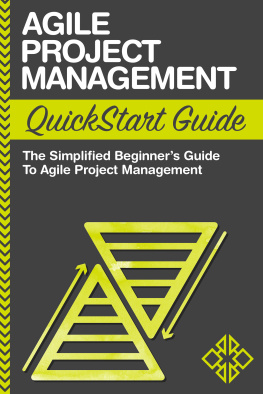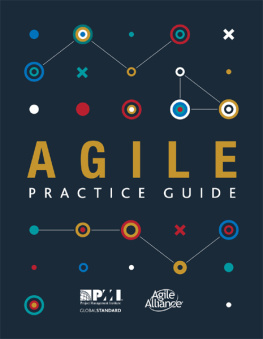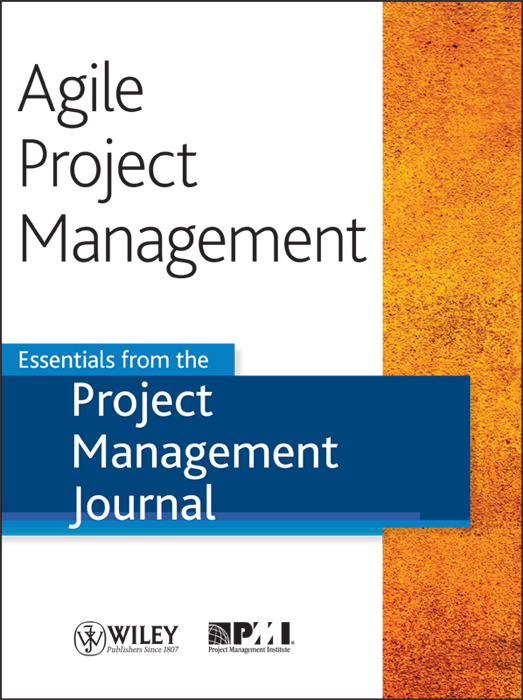Agile Project Management
Christophe N. Bredillet
The development of the Agile movement, whatever the area of application or discipline, comes from the acknowledgment that traditional approaches are not sufficient to meet higher competitive market conditions and requirements such as a need for faster development and delivery of (new and differentiated) products and services (time dimension) and an increased productivity (cost dimension), while insuring a higher level of quality meeting customers expectations, the famous faster, cheaper, better.
For instance, the study of literature on agile manufacturing reveals that the birth of agile manufacturing principles is marked by the constitution of the Agility Forum by a group of researchers at the Iacocca Institute at Lehigh University in 1991. The principles can be summarized as: agile manufacturing is integrating lean manufacturing (cost dimension) and flexible manufacturing (time dimension) at the right quality level. The idea was to overcome the rigidity and mechanistic perspectives of traditional manufacturing and its failure to address higher competitive markets demanding quicker development of new products and increased variety of products and to meet the needs involved by the then-new manufacturing environment in areas such as coping with flexibility and change requested by customers, being more efficient with regard to productivity and costs, aiding employees empowerment, and so on (Ramesh & Devadasan, 2007).
As such, the agile manufacturing paradigm rests on four principles: response to change and uncertainty, supplying highly customized products, synthesis of diverse technologies, and intra-enterprise and inter-enterprise integration.
In the software industry, the Agile movement, although in emergence in spring 2000 and born February 1113, 2001, is one of the answers to the changing conditions of the economy, which takes roots in and mirrors the Agile Manufacturing movement. As explained by Jim Highsmith, one of the 17 anarchists, as the founders named themselves,
The Agile movement is not anti-methodology, in fact, many of us want to restore credibility to the word methodology. We want to restore a balance. We embrace modeling, but not in order to file some diagram in a dusty corporate repository. (Highsmith, 2001)
The well-known 12 principles are:
Our highest priority is to satisfy the customer through early and continuous delivery of valuable software.
Welcome changing requirements, even late in development. Agile processes harness change for the customers competitive advantage.
Deliver working software frequently, from a couple of weeks to a couple of months, with a preference to the shorter timescale.
Businesspeople and developers work together daily throughout the project.
Build projects around motivated individuals. Give them the environment and support they need, and trust them to get the job done.
The most efficient and effective method of conveying information to and within a development team is face-to-face conversation.
Working software is the primary measure of progress.
Agile processes promote sustainable development. The sponsors, developers, and users should be able to maintain a constant pace indefinitely.
Continuous attention to technical excellence and good design enhances agility.
Simplicitythe art of maximizing the amount of work not doneis essential.
The best architectures, requirements, and designs emerge from self-organizing teams.
At regular intervals, the team reflects on how to become more effective, then tunes and adjusts its behavior accordingly.
Each of this statement and these statements as a whole can fit perfectly well in a generic way within any area of application or discipline concerned. One of the key aspects of the Agile stream approach is to go beyond a mechanistic view of the world, recognizing that normative linear thinkingbased solutions cannot address our volatile, uncertain, complex, and ambiguous (VUCA) environment and chaordic world (Hock, 1995).
For the reader interested in agile project management applications, response to changes and transformations and its impact on managing projects in a VUCA environment and chaordic world, this eBook is a must-read. Various insights are provided covering the following key aspects:

how to master complexity and changes in projects, economy, and society;

how interaction between the project management team and project owners can influence risk management;

how to move beyond the traditional mechanistic project management approach to what is to be learned, for practical purposes, from evolutionary, self-organized, and complexity theory approaches;

how to include agile principles into an improved, in a flexible way, Logical Framework Analysis structure, including project approval, design, and evaluation stages;

what is the impact of agile principles on project management organizations with regard to situated lessons learned, organizational learning, and good practices sharing;

in order to manage complex systems development projects, what kind of innovative project management practice supports agile principles;

how team morale development can counteract free-riding in the agile project environment and lead to higher project team performance;

what kind of leadership competencies of agile project team managers contribute to higher project performance and success;

what are the relevant project planning styles in a dynamic and changing environment;

how to design the governance structure relevant for the agile environment and supporting value management in the public sector;

what are the characteristics of agile project management in the context of new product development;

how to develop an agile dynamics of collaboration in multipartner projects;

how to manage project portfolios in uncertain dynamic environments;

how agile, improvisational, temporal, and organizational rhythmic perspectives help to cope with change in the project management of high-value deliverables; and

how to master ambidexterity as a competence of project leaders in an agile and extreme environment.
REFERENCES














 how to master complexity and changes in projects, economy, and society;
how to master complexity and changes in projects, economy, and society;